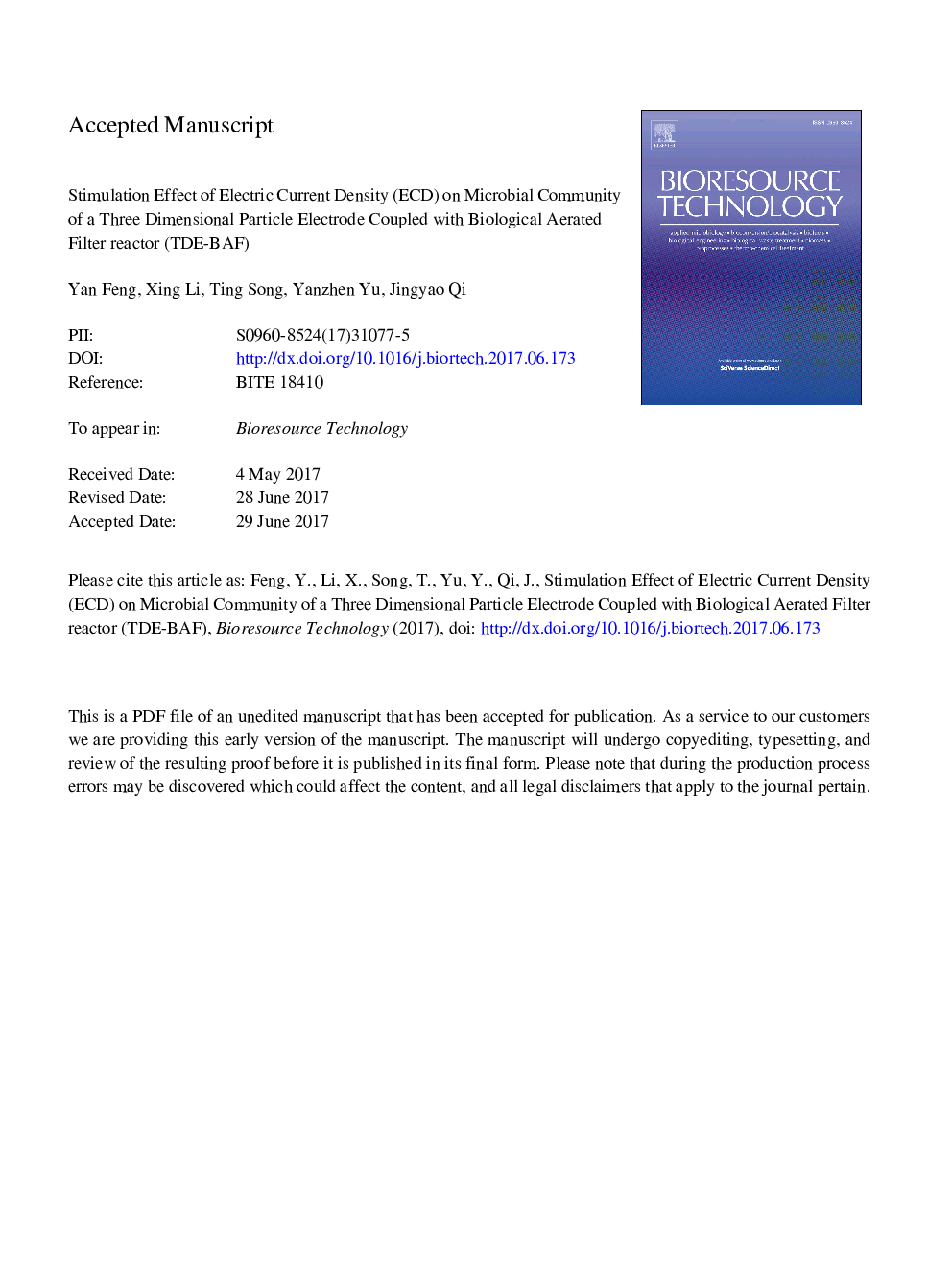| Article ID | Journal | Published Year | Pages | File Type |
|---|---|---|---|---|
| 4996877 | Bioresource Technology | 2017 | 39 Pages |
Abstract
Improving the stimulation effect of electric current density (ECD) on microbial community is critical in designing and operating TDE-BAF. This study investigated the effect of ECD at 0.00, 4.08, 6.12, 12.20, 14.25, 16.30 and 20.20 A·mâ2 on the removal performance, diversity and structure of microbial community in TDE-BAF. Results indicated that the ECD of 14.25 A·mâ2 exhibited the highest COD, TOC and NH4+-N average removal rates with 93.33%, 91.26% and 93.87%, respectively; Under high ECD, especially exceeding 14.25 A·mâ2, the inhibition of growth and activity because of plasmatorrhexis was in agreement with the sharp biomass decline; there was no significant relation between community richness and diversity and removal efficiency below optimum ECD, while above optimal ECD, it was just the opposite; Microbial communities mainly including Hydrogenophaga, Saprospiraceae_uncultured, Delftia, Enterobacter, Pseudomonas, Pseudoxanthomonas, and Nitrosospira and physicochemical properties well explained the excellent removal performance at the optimum ECD.
Related Topics
Physical Sciences and Engineering
Chemical Engineering
Process Chemistry and Technology
Authors
Yan Feng, Xing Li, Ting Song, Yanzhen Yu, Jingyao Qi,
